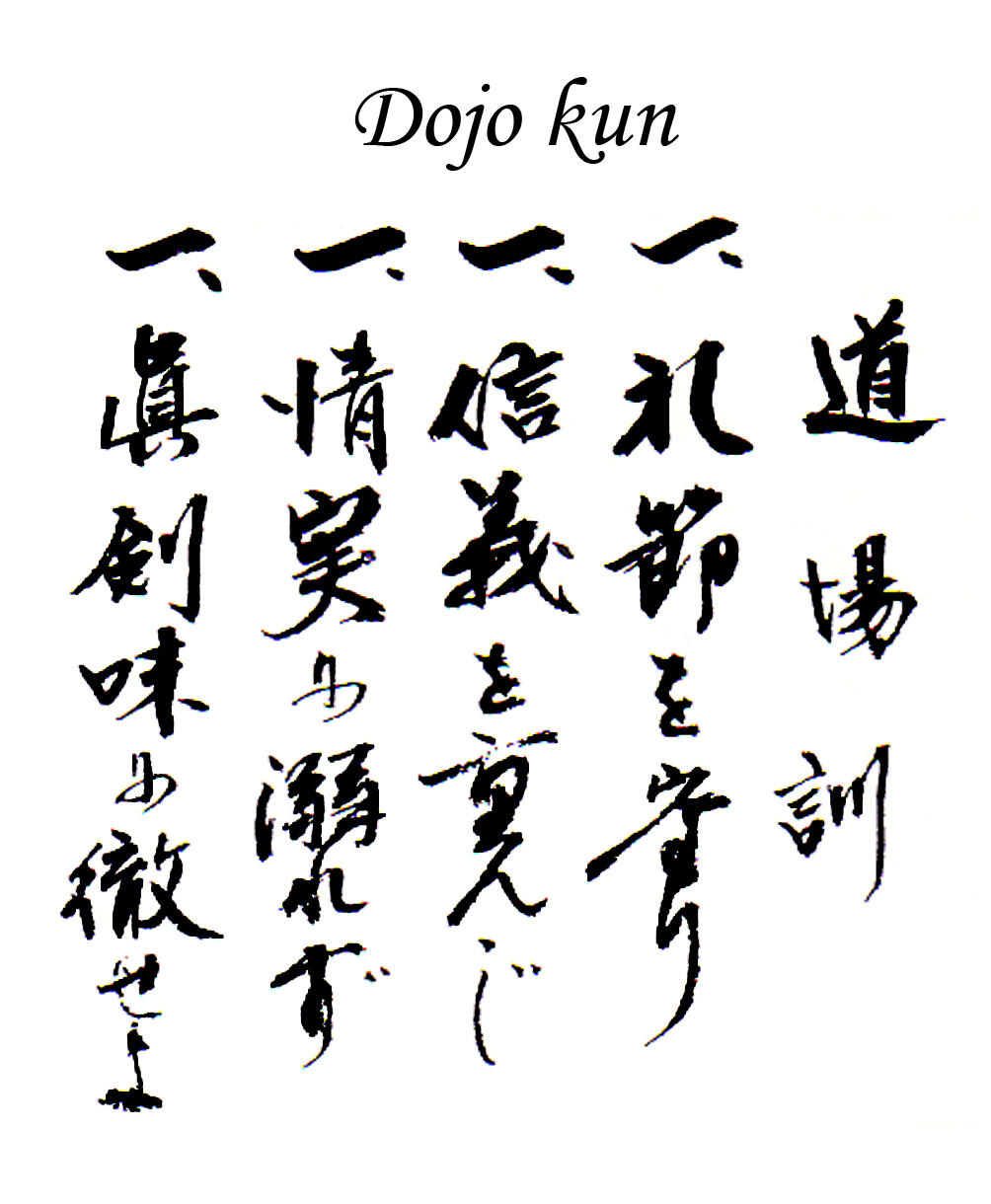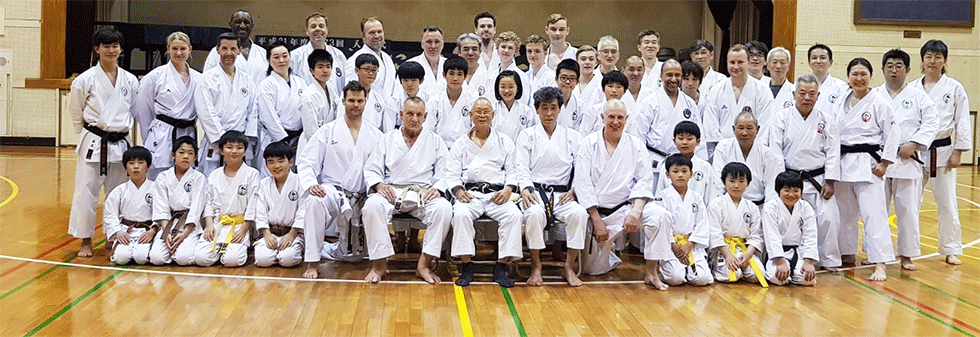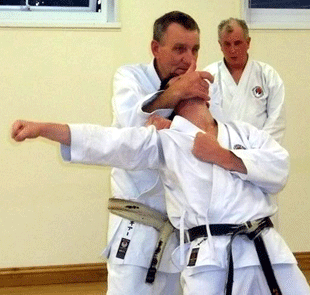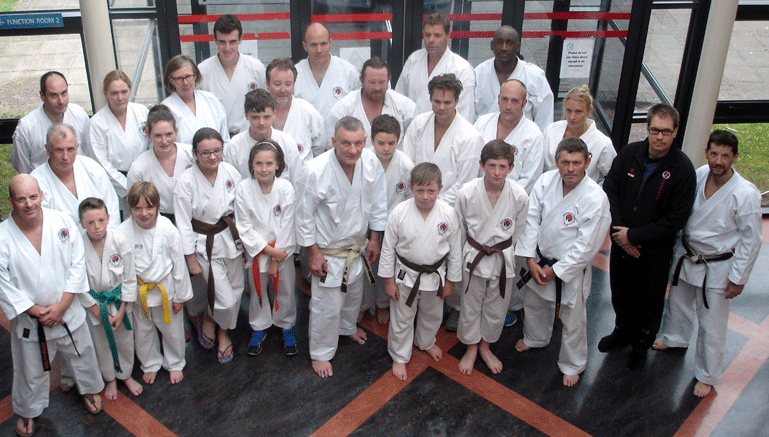Dojo Kun

Dojo Maxims
These maxims are mottos — guiding principles that serious students of Karate should try to follow if they wish to gain the maximum from their training. They reflect an attitude and way of life, similar in spirit to English phrases like “Service not self”, “Deeds not words”, and “Be prepared.”
1. Reisetsu O Mamori
“Stick to the rules”
In the dojo, good etiquette must be observed by following the rules.
Ireland in Japanese Kanji
Ireland in Japanese:
- [ Japanese Pronunciation ] Ai-ru-ran-do
- [ Hiragana ] アイルランド
- [ Kanji ] 愛蘭 (愛 Ire: love, 蘭 land: orchid)
The Japanese word airurando translates as “Ireland” and is composed of the kanji Ire (read ai ) meaning “Love” and Land (read ran ) meaning “Orchid.”
Country names were originally translated to Japanese using a phonetic translation to kanji . These kanji were selected mainly for their pronunciation and not necessarily for their meaning. Also Ireland is commonly written in katakana as (read airurando ). The pronunciation is exactly the same.
Japan Training Tour 2016
Suzuki-Ha International Japanese Training Tour

Twelve months in the planning between Sensei Philip Kear, Kobayashi Sensei, and Furukawa Sensei, we were finally on our way to Tokyo, Japan for 11 days. We had invites to train in seven different dojos. After 20+ hours and working out the Tokyo rail system, we arrived at our hotel in Shinjuku.
Shinjuku means “New Lodge” — named during the Edo period as a rest stop. Today, it is synonymous with modernity: steel and glass skyscrapers, neon lights, and bustling crowds at all hours, while still retaining corners rich in culture and tradition.
Japan Training Tour 2019

Two years in the planning by Sensei Philip Kear (8th Dan) and Kobayashi Sensei, our group had the honour of invitations to visit and train in private dojos in and around Tokyo, Japan.
We set out for an early morning flight and after cars, planes, trains and taxis we arrived at our hotel in Shinjuku. Sensei Phil Kear was in reception to greet us, help us get our bearings, grab breakfast, and organise train cards.
Kagami Biraki
Kagami Biraki is a traditional celebration for martial artists usually held on the second Sunday of the New Year. It is a very special annual event for replenishing energy and renewing your commitment to training in the year a head. This will be rigorous training, Followed by a New Year Toast. Training time will also include Mediation time. This training course will be a good way for all members from all clubs to start the year training together.
Six Principles of Kata

Balance

Kisoku no Donto

Waza no Kankyu

Chikara no Kyojaku

Inen

Ikita Kata

Kata No Rokugensoku
Ikita Kata: Kata should be alive and preformed with feeling and purpose.
Inen: Kata most be performed with spirit.
Chikara no Kyojaku: Kata must be performed with variation in the application of power. Technique may be strong or yielding, hard then soft.
To Be or Not to Be a Dan Grade
To get your BLACK BELT or to BE a BLACK BELT are two very different things. In the morning of your Dan Grading you get out of Bed a brown belt, if you grade and are successful you will go to bed that night a BLACK BELT.
What has changed nothing, you have come to the end of your training as a KYU grade and now can begin to train and learn as a Dan grade. Shodan in English is First Level, This is a new beginning of training as a Dan grade.
Training with Philip Kear Sensei

Friday evening the 16th of August saw Sensei Philip Kear 8th Dan at Sensei George Grimes 8 th Dan Bristol Wado Ryu Dojo. This is the third time in as many years that he has taken the class in Bristol. All who made it to the class thoroughly enjoyed themselves….except maybe Sensei Alan Smith who was partner and at the receiving end of Sensei`s techniques during the evening. Alan and Sensei Robert McGrath 6 th Dan had made the trip over from Dublin for the training.
Wado Kokusai Karate-do Ireland — Summer Course 2014 {#summer2014}

Sensei Philip Kear (8th Dan) visited Ireland in August 2014 after an invitation from Sensei Robert McGrath (6th Dan).
They first met in Japan in 1984 during the 50th Anniversary of Wado Ryu Karate. After training together again in recent years, Sensei Robert invited Sensei Philip to run a course in Dublin.
Kear Sensei, the eldest student of the late Tatsuo Suzuki, trained full-time in Japan in 1969 at Nichi Dai University Dojo, grading under Hironori Ohtsuka Meijin (10th Dan).
Wado Ryu Principles
Wado Ryu shares many general Karate-do principles with Okinawan styles. However, at its core, it contains fundamental concepts derived from Shindo Yoshin Ryu Jujutsu and other Japanese Bujutsu, not typically seen in Okinawan Karate.
Maai
Maai is often translated as “fighting distance,” but it also includes timing, rhythm, awareness, and intent. It’s not just physical distance — it’s also psychological space and timing.
If an opponent can strike you without moving their feet, the distance is too short. Good maai is when either the attacker must step in to reach or the defender can retreat safely with a half-step. This distance constantly fluctuates during combat and must be consciously adjusted.